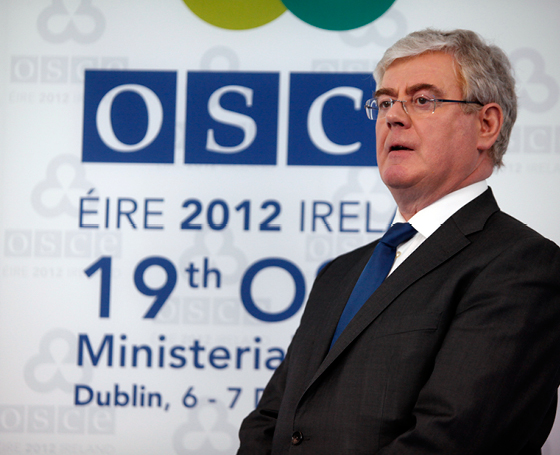BACKGROUND
The OSCE traces its origins to the Cold War détente of the early 1970s, when the Conference on Security and Co-operation in Europe (CSCE) was created to serve as a multilateral forum for dialogue and negotiation between East and West. All 57 participating States enjoy equal status, and decisions are taken by consensus on a politically, but not legally binding basis.
The OSCE has a comprehensive approach to security that encompasses politico-military, economic and environmental, and human aspects. It therefore addresses a wide range of security-related concerns, including arms control, confidence- and security-building measures, human rights, national minorities, democratisation, policing strategies, counter-terrorism and economic and environmental activities.
![]()
57
Participating nations
![]()
1,250
Attendees
![]()
1
Communications solution

Migrating to TETRA
The logistical arrangement of the 19th OSCE Ministerial Council, a two day event attended by 80 delegations headed at Foreign Minister level, comprising over 1,000 delegates as well as 250 media, on 6-7 December 2012 in the RDS Simmonscourt. This was the largest such event organised by Ireland and was particularly challenging from a transport and security perspective. At previous events the OSCE used mobile phones calls and texts and emails from laptops/PCs.
The Department was aware that the mobile phone network had collapsed at previous Ministerial meetings given the high number of users at any one time and was concerned that such a collapse would impact negatively on the smooth running of the Council. Given the numbers of persons involved, plans changed and evolved so it was essential also to be able to feed information to those involved in the logistical arrangements in ‘real time’ and to gather information from the liaison officers on a constant basis.
Coverage
Tetra offered a secure communications system over a reliable network with excellent coverage, which allowed up to 120 users communicate in various different user groups. It allowed the provision of instant feedback and issues to be addressed quickly.
Security
Information transmitted securely to coordinate the logistical arrangements for 80 Heads of Delegation and over 1,000 delegates, ensuring the coordinated arrival of the Heads of Delegation (i.e. Foreign Ministers) in just 75 minute time scale.
Training
The Tetra provided manual formed the basis for the Departmental instructions and, along with our 'train the trainer' session, we reviewed the fleet map prepared by the Protocol Service. The majority of the users, first time users, found the handsets and accessories easy to use.
THE RESULT
Tetra offered a secure communications system over a reliable network with excellent coverage, which allowed up to 120 users communicate in various different user groups. It allowed the provision of instant feedback and for issues to be addressed quickly so that they did not become problems.
"The Tetra units contributed to the smooth running of a logistically challenging event, the largest-type of this event to take place in Ireland to date and offered a reliable, instantaneous and secure communications system for a large number of users."
An Garda Síochána




